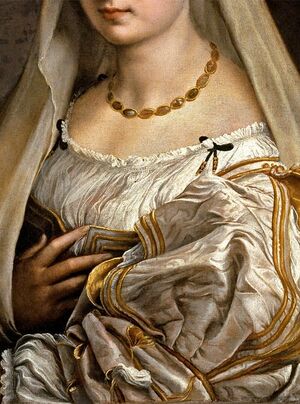Raphael Sanzio
A leading figure of Italian High Renaissance classicism, Raphael is best known for his "Madonnas," including the Sistine Madonna, and for his large figure compositions in the Palace of the Vatican in Rome.
Early Life and Training:
He was born in Urbino, a town in central Italy. His first teacher was his father. He was a painter. His father had a workshop. His mother died when he was 7 and his father died when he was 11. He continued in his father's workshop and was a popular oil master painter in Urbino.
Then, he moved to Perugia and was an apprentice of Pietro Perugino. At the age of 17, he moved to Florence and took commissions from several patrons. He later moved to Rome and became a close friend to Pope Julius II.
Professional Life:
Pope Julius II commissioned him with the Stanze della Signature ( the Vatican's official rooms or the Pope's private office).He painted the School of Athens. It was a fresco. By the time he was painting the Vatican's official rooms, Michelangelo was painting the Sistine Chapel ceiling. He had the chance to see this ceiling and became a great admirer of Michelangelo. Also, they were rivals. They were competing to make the Pope happy. He copied some of the figures from the Sistine Chapel. Later, he added a last figure in the front of the "School of Athens "painting. It was the figure of Michelangelo himself.
He made a portrait of Pope Julius II. After his oil painting, all the popes posed sitting on a chair.
He also copied or was inspired by Leonardo Da Vinci's Mona Lisa. He made many "Madonnas". He got inspiration from Da Vinci ( Mona Lisa and his Madonnas), Botticelli and Simonetta´s face, and Venus. Also, he got inspiration from Michelangelo, he became his admirer and included his figure in the " School of Athens". His final and controversial work of Art was "Transfiguration" with biblical scenes.
He also worked as an architect using the Roman style. He participated in the building of St Peter´s Cathedral. After architect Donato Bramante died in 1514, the pope hired Raphael as his chief architect. Under this appointment, Raphael created the design for a chapel in Sant’ Eligio degli Orefici. He also designed Rome’s Santa Maria del Popolo Chapel and an area within Saint Peter’s new basilica.
Raphael’s architectural work was not limited to religious buildings. It also extended to designing palaces. Raphael’s architecture honored the classical sensibilities of his predecessor, Donato Bramante, and incorporated his use of ornamental details. Such details would come to define the architectural style of the late Renaissance and early Baroque periods.
Death and Legacy:
He was rich, popular, and famous. On April 6, 1520, Raphael’s 37th birthday, he died of a sexual infection in Rome, Italy. He had been working on his largest painting on canvas, The Transfiguration (commissioned in 1517), at the time of his death. When his funeral mass was held at the Vatican, Raphael's unfinished Transfiguration was placed on his coffin stand. Raphael’s body was interred at the Pantheon in Rome, Italy.
Following his death, Raphael's movement toward Mannerism influenced painting styles in Italy’s advancing Baroque period. Celebrated for the balanced and harmonious compositions of his "Madonnas," portraits, frescoes, and architecture, Raphael continues to be widely regarded as the leading artistic figure of Italian High Renaissance classicism.
Interesting Facts About Raphael:
- He loved women but never married. But he was in love with "La Fornarina",(the baker's daughter) whose face appears in some paintings.
- He built up a studio of 50 assistants which was quite impressive. As was common practice at the time, his assistants were well-trained to take his drawings and transform them into finished pieces in his name.
- He was friendly, sociable, and partylike. His personality was charming.
- Raphael included an image of himself in "The School of Athens". As is believed to represent “Apelles of Kos,” one of the most famous painters of Ancient Greece.
- Michelangelo hated him because there was a time when the Pope preferred Raphael.


